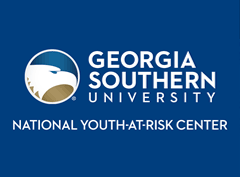Putting The Active Into Activities: Engaging Students In Their Learning
Focused Area
Youth-At-Risk in Urban Settings
Relevance to Focused Area
Our presentation relates to engaging youth-at-risk in urban settings through active learning. Students' attendance and learning abilities improve when their classes are structured with activities rather than more traditional teaching methods.
Primary Strand
Academic Achievement & School Leadership
Relevance to Primary Strand
Our presentation relates mostly to the first strand of the conference theme. Our primary focus is to share tested and successful teaching methods that appeal to many different learning styles of students, especially those students whose learning styles have not developed beyond learning by doing. Students are no longer passive learners with these activities but instead are active participants in the learning process.
Brief Program Description
Help motivate your students to increase their understanding of what they’re learning by getting them involved in the process. This interactive session lets the attendee experience learning as their students will, as the different activities are examined and modeled in a variety of subject matters. The activities create a greater understanding of the material for the students because the students have become part of the lesson. The lessons themselves have been adapted from traditional learning tools, such as worksheets, to students learning the same concepts cooperatively and kinesthetically. The attendee will leave with at least a half dozen different activities that can be adapted into any subject area and immediately implemented into the classroom.
Summary
The presenters teach in a district with a low socio-economic profile yet have continued success with their students where other teachers do not. They attribute this to the activities they use to present and review material. These activities provide opportunities for students to become actively engaged in the learning process. Students are excited to come to their classes and are often disappointed to leave, commenting that the class goes so fast. The activities create a greater understanding of the material for the students because they have become part of the lesson. The activities allow students to develop critical thinking skills in a safe, collaborative environment. Additionally, they foster the students’ ability to make connections to the material and provide greater retention of the material. Our interactive session lets the attendee experience learning as their students will, as the different activities are examined and modeled in a variety of subject matters. The activities create a greater understanding of the material for the students because the students have become part of the lesson. The lessons themselves have been adapted from traditional learning tools, such as worksheets, to students learning the same concepts cooperatively and kinesthetically. The attendee will leave with at least a half dozen different activities that can be adapted into any subject area and immediately implemented into the classroom.
Evidence
The presenters have classes with better attendance and with higher passing rates than their peers. They have also analyzed their own assessments and found that students' scores increase when instruction includes activities that incorporate active learning techniques. The quote below shows the same findings even at the university level.
“Most of the studies we analyzed were based on data from identical instructors teaching active learning v lecturing sections; some studies (e.g. Van Heuvelen in Am. J. Physics; Deslauriers et al. in Science) have purposely matched award-winning lecturers with inexperienced teachers who do active learning and found that the students did worse when given “brilliant lectures.” We’ve yet to see any evidence that celebrated lecturers can help students more than even 1st-generation active learning does.”
from Scott Freeman, one of the authors of the largest and most comprehensive review of the effect of active learning on STEM at the university level May 2014
Format
Individual Presentation
Biographical Sketch
Caryn Ross, Professional Secondary Teacher, Hazel Park High School, Hazel Park, MI
Caryn Ross has been a French and Language Arts teacher for 23 years at both the high school and middle school levels. She has a Master’s and Specialist’s degree in Educational Leadership and it was through these degrees that she started connecting data and research into her classroom and why she designed school-wide interventions to improve student learning. Through research and assessment comparisons, she believes strongly in the necessity of Active Learning for students to connect with and engage in their learning.
Dawn Gafa, Professional Secondary Teacher, Hazel Park High School, Hazel Park, MI
Dawn Gafa has been a Mathematics and Science teacher at the high school level for 15 years, teaching 7 different subjects during that time. She has a Master’s degree in Education and worked in the automotive industry prior to becoming a teacher. She has served on the district curriculum council and school improvement committees, continually striving to help all students learn.
Start Date
11-6-2015 3:15 PM
End Date
11-6-2015 4:30 PM
Recommended Citation
Ross, Caryn and Gafa, Dawn, "Putting The Active Into Activities: Engaging Students In Their Learning" (2015). National Youth-At-Risk Conference, West (2015-2017). 8.
https://digitalcommons.georgiasouthern.edu/nyar_vegas/2015/rural/8
Putting The Active Into Activities: Engaging Students In Their Learning
Help motivate your students to increase their understanding of what they’re learning by getting them involved in the process. This interactive session lets the attendee experience learning as their students will, as the different activities are examined and modeled in a variety of subject matters. The activities create a greater understanding of the material for the students because the students have become part of the lesson. The lessons themselves have been adapted from traditional learning tools, such as worksheets, to students learning the same concepts cooperatively and kinesthetically. The attendee will leave with at least a half dozen different activities that can be adapted into any subject area and immediately implemented into the classroom.
